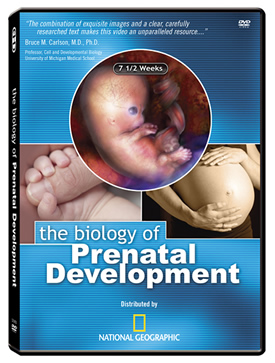Download English PDF Download Spanish PDF Download French PDF What is PDF?
Table of Contents
- THE EMBRYONIC PERIOD (THE FIRST 8 WEEKS)
-
- EMBRYONIC DEVELOPMENT: THE FIRST 4 WEEKS
-
- Chapter 3 – Fertilization
- Chapter 4 – DNA, Cell Division, and Early Pregnancy Factor (EPF)
- Chapter 5 – Early Stages (Morula and Blastocyst) and Stem Cells
- Chapter 6 – 1 to 1 1/2 Weeks: Implantation and Human Chorionic Gonadotropin (hCG)
- Chapter 7 – The Placenta and Umbilical Cord
- Chapter 8 – Nutrition and Protection
- Chapter 9 – 2 to 4 Weeks: Germ Layers and Organ Formation
- Chapter 10 – 3 to 4 Weeks: The Folding of the Embryo
- EMBRYONIC DEVELOPMENT: 4 TO 6 WEEKS
-
- Chapter 11 – 4 Weeks: Amniotic Fluid
- Chapter 12 – The Heart in Action
- Chapter 13 – Brain Growth
- Chapter 14 – Limb Buds and Skin
- Chapter 15 – 5 Weeks: Cerebral Hemispheres
- Chapter 16 – Major Airways
- Chapter 17 – Liver and Kidneys
- Chapter 18 – Yolk Sac and Germ Cells
- Chapter 19 – Hand Plates and Cartilage
- EMBRYONIC DEVELOPMENT: 6 TO 8 WEEKS
-
- Chapter 20 – 6 Weeks: Motion and Sensation
- Chapter 21 – The External Ear and Blood Cell Formation
- Chapter 22 – The Diaphragm and Intestines
- Chapter 23 – Hand Plates and Brainwaves
- Chapter 24 – Nipple Formation
- Chapter 25 – Limb Development
- Chapter 26 – 7 Weeks: Hiccups and Startle Response
- Chapter 27 – The Maturing Heart
- Chapter 28 – Ovaries and Eyes
- Chapter 29 – Fingers and Toes
- THE 8-WEEK EMBRYO
- THE FETAL PERIOD (8 WEEKS THROUGH BIRTH)
-
- Chapter 37 – 9 Weeks: Swallows, Sighs, and Stretches
- Chapter 38 – 10 Weeks: Rolls Eyes and Yawns, Fingernails & Fingerprints
- Chapter 39 – 11 Weeks: Absorbs Glucose and Water
- Chapter 40 – 3 to 4 Months (12 to 16 Weeks): Taste Buds, Jaw Motion, Rooting Reflex, Quickening
- Chapter 41 – 4 to 5 Months (16 to 20 Weeks): Stress Response, Vernix Caseosa, Circadian Rhythms
- Chapter 42 – 5 to 6 Months (20 to 24 Weeks): Responds to Sound; Hair and Skin; Age of Viability
- Chapter 43 – 6 to 7 Months (24 to 28 Weeks): Blink-Startle; Pupils Respond to Light; Smell and Taste
- Chapter 44 – 7 to 8 Months (28 to 32 Weeks): Sound Discrimination, Behavioral States
- Chapter 45 – 8 to 9 Months (32 to 36 Weeks): Alveoli Formation, Firm Grasp, Taste Preferences
- Chapter 46 – 9 Months to Birth (36 Weeks through Birth)
Chapter 40 3 to 4 Months (12 to 16 Weeks): Taste Buds, Jaw Motion, Rooting Reflex, Quickening
Between 11 and 12 weeks,
fetal weight increases
nearly 60%.
Twelve weeks marks the end of the first third, or trimester, of pregnancy.
Twelve weeks marks the end of the first third, or trimester, of pregnancy.
Distinct taste buds now cover
the inside of the mouth.
By birth, taste buds
will remain
only on the tongue
and roof of the mouth.
Bowel movements begin
as early as 12 weeks
and continue for about 6 weeks.
The material first expelled from the fetal and newborn colon is called meconium. It is composed of digestive enzymes, proteins, and dead cells shed by the digestive tract.
The material first expelled from the fetal and newborn colon is called meconium. It is composed of digestive enzymes, proteins, and dead cells shed by the digestive tract.
By 12 weeks,
upper limb length
has nearly reached its final
proportion to body size.
The lower limbs take longer
to attain their
ultimate proportions.
With the exception of the back
and the top of the head,
the body of the entire fetus
now responds to light touch.
Sex-dependent developmental
differences
appear for the first time.
For instance, female fetuses
exhibit jaw movement
more frequently than males.
In contrast to the withdrawal
response seen earlier,
stimulation near the mouth
now evokes
a turning toward the stimulus
and an opening of the mouth.
This response is called
the "rooting reflex"
and it persists after birth,
helping the newborn find
his or her mother's nipple
during breastfeeding.
The face continues to mature
as fat deposits begin
to fill out the cheeks
and tooth development begins.
By 15 weeks, blood-forming
stem cells arrive
and multiply in the bone marrow.
Most blood cell formation
will occur here.
Although movement begins
in the 6-week embryo,
a pregnant woman first
senses fetal movement
between 14 and 18 weeks.
Traditionally, this event
has been called quickening.


